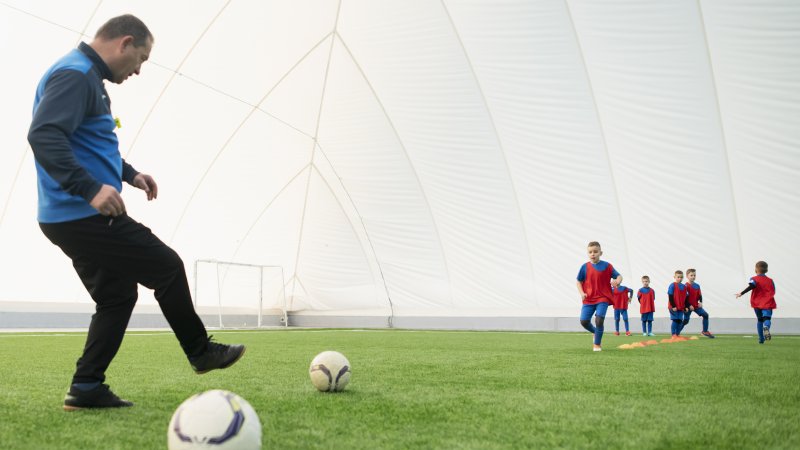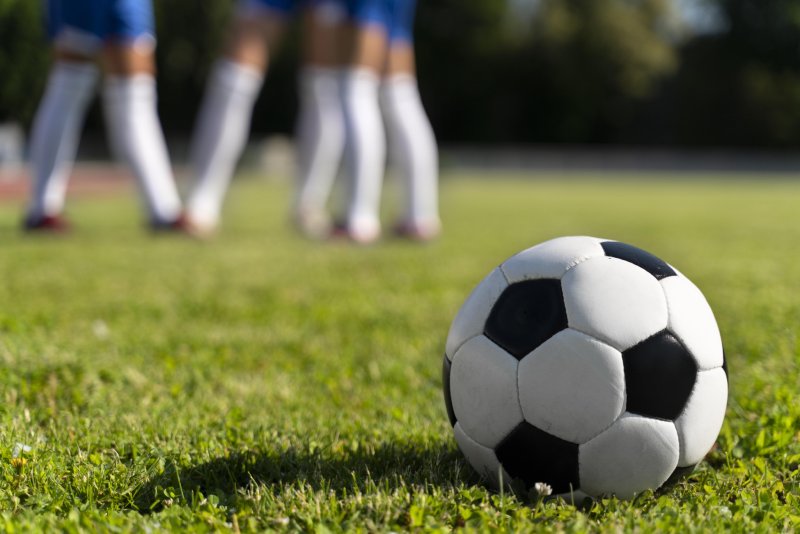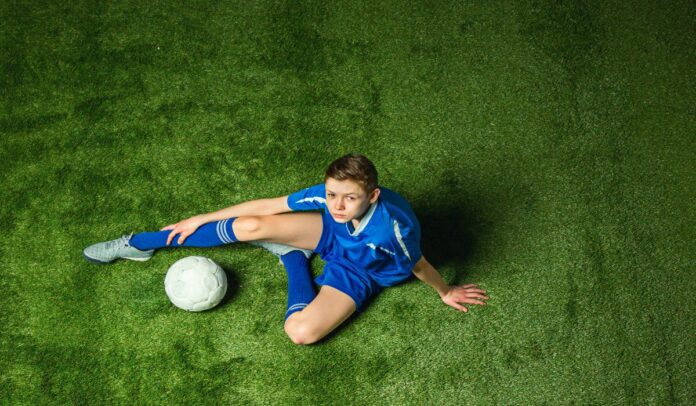Grass pitches are ideal playing fields for outdoor sports such as football and are one of the important factors that directly affect football performance. Grass allows football players to move comfortably during the game, providing a faster and more efficient game.
Grass allows the ball to roll naturally and increases players’ ball control, which contributes to the development of technical skills. In addition, grass reduces the impacts on football players’ feet and knees, minimizing the risk of injury. Thanks to its soft structure, grass makes it easier for athletes to change direction quickly and allows them to run more controlled.
One of the contributions of grass pitches to football performance is that it increases the speed and endurance of players. Grass is an important element that affects the pressure applied to the ball and the running speed of players.
On grass pitches, it is easier for players to move the ball quickly and dribble more effectively. In addition, the natural structure of grass pitches provides the ground that footballers need to provide more balance and stability in sudden movements. This helps footballers increase their speed and better control the tempo of the game.
Finally, grass pitches help footballers perform better psychologically and physically. Since grass is a natural surface, players generally feel less stressed and more relaxed during the game. This allows them to focus better and think strategically. In addition, training and matches on grass pitches help players improve their ball control and passing game. The natural movement ability offered by grass makes footballers feel more productive and improves their performance in the long term.

How to Use Cleats on Grass Ground?
The use of cleats on grass pitches is an important factor that directly affects football performance. Choosing and using the right cleats allows football players to move more comfortably on the field, maintain balance and reduce the risk of injury. There are several important aspects of using the right cleats on grass pitches.
First of all, it is important to make sure that the cleats have pointed tips (claws) on grass pitches. The grass pitch should be solid enough to provide sufficient grip during players’ sudden movements. The spikes easily penetrate the grass, allowing the players to stand firmly on the ground and move quickly.
This is very important in situations such as quick changes of direction, sudden stops and interception of the ball. However, the tips of the cleats should not be too long, as this can cause the feet to sink too much into the grass and cause strain or injury to the legs.
Secondly, the sole and structure of the cleat are also very important. Cleats specially designed for grass ground are usually made of more flexible and lightweight materials. There are lugs on the sole that have a certain distance so that it can come out of the grass without getting stuck.
These lugs, without being too long, fit properly on the ground and provide optimal grip. In addition, in order for football players to be able to run comfortably during the game, the cleats should be comfortable, not squeeze the feet and not put excessive pressure.
Finally, choosing the right size is also a critical factor in using cleats. Cleats that are appropriate for your foot size, not too tight or too loose, help you perform better during the game.
In addition, the soft and supportive inner lining of the cleats ensures that players have a comfortable experience during long-term games. Using the right cleats when playing on grass is important not only for performance but also for the athlete’s health.

Types of Crampons and Grass Grounds
Cleat types and grass pitches are important factors affecting the performance of football players. Here are the types of cleats suitable for grass pitches:
- FG (Firm Ground) Cleats :
- Area of Use: Used on short and hard grass grounds and natural grass fields.
- Features: Short and hard nails ensure that the football player holds on firmly to the ground. It offers excellent performance on grounds where the grass is short.
- Advantages: Ideal for quick changes of direction and balanced runs.
- SG (Soft Ground) Cleats :
- Area of Use: Used on soft, wet or muddy grass grounds.
- Features: With long metal nails, these nails penetrate deeply into grass grounds.
- Advantages: Provides high grip on soft surfaces and prevents slipping.
- AG (Artificial Ground) Cleats :
- Area of Use: Used on synthetic grass fields.
- Features: Short, closely spaced lugs provide compatible movement on synthetic ground.
- Advantages: Provides durable and comfortable performance on synthetic grass surfaces.
- FG/AG (Firm Ground/Artificial Ground) Hybrid Cleats :
- Area of Use: Can be used on both natural grass and synthetic grass fields.
- Features: It combines the features of both FG and AG crampons, making it versatile.
- Advantages: Can be used on different surfaces, provides suitable grip for both types of surfaces.
Each type of cleat is designed to provide optimum performance on different turf surfaces. Choosing the right cleat will increase the safety and efficiency of football players.




